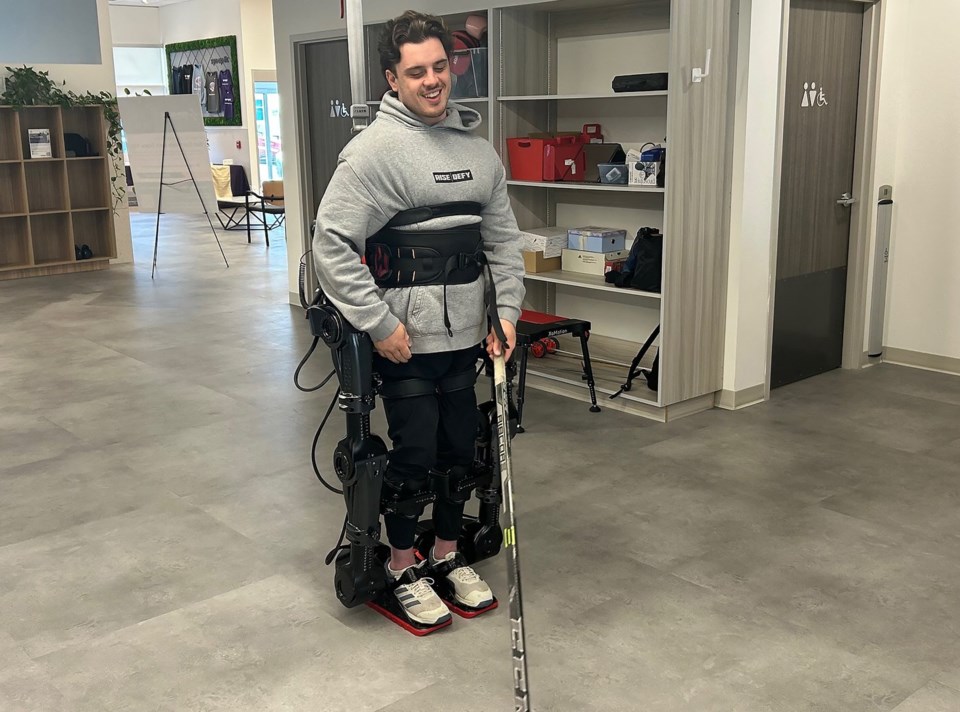CALGARY — It's been a while since Ryan Straschnitzki looked at the world from a different perspective.
The former Humboldt Broncos player, paralyzed from the chest down in the 2018 bus crash that killed 16 people and injured 13 others, has been relegated to a wheelchair for the past seven years.
On Thursday he demonstrated a new exoskeleton that allowed him to walk along a 40-foot track in Calgary.
"I forgot how tall I was. I'm usually sitting really low so I don't see people above their heads. Now, being here, I get to see everybody's head. It's cool," Straschnitzki said while standing in the exoskeleton.
"I feel like Iron Man in this thing. Just missing the helmet," he added with a laugh.
Vancouver-based Human in Motion Robotic’s XoMotion system enables people with spinal cord injuries and in neurological rehabilitation to stand and walk with robotic support.
Straschnitzki had been in the device before but got to control it Thursday.
He used a small remote to move the device forward, backward and turn sideways.
The device also helped him handle a hockey stick and throw a football to staff at the rehab centre.
"It's pretty cool. I'm glad I played video games growing up," he said.
"I got to learn how to two-step in this thing. Someone here's got to teach me and I'll bring it to Stampede."
Straschnitzki said this technology wasn't even an option when he sustained his injuries.
"It was more so is my body going to heal? Am I going to walk again on my own?," he said.
"Over time you come to terms with the extent of your injuries and then you realize that science is expanding every day and there's technology like this one that will allow people with spinal cord injuries to walk again. It's super incredible and I'm very fortunate to try it."
The cost of the exoskeleton was about $400,000.
Uyen Nguyen, executive director of Calgary's Synaptic Spinal Cord Injury and Neuro Rehabilitation Centre, said the exoskeleton mimics human motions.
"I never thought this was going to be possible. It's almost a Cinderella story that's come to life," Nguyen said.
"It is one of the most advanced because it is the most human-like in movement. Biomechanically it is smooth so when Ryan gets into it it feels great, it feels natural."
The device will be offered to other patients at the centre including those with spinal injuries or health problems like Parkinson's disease.
Siamak Arzanpour, the CEO of Human in Motion Robotics Inc., said the goal has always been to help those dealing with injuries to have more independence. He said the long-term goal is to have the exoskeletons deployed in real life activities, but it needs a controlled environment to prove it is safe first.
He said Straschnitzki was the inspiration for developing the device.
"In 2018 Ryan probably didn't think about us, but from the beginning we were thinking about him," Arzanpour said.
"We wanted to use this device, helping him to walk again."
This report by The Canadian Press was first published June 12, 2025.
Bill Graveland, The Canadian Press




